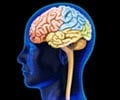Higher structure-function coupling was found in parts of the brain that are specialized for processing simple sensory information, like the visual system.

However, little research exists to explain how white matter matures to support activity that allows for improved executive function during adolescence--a period of rapid brain development. "By charting brain development across childhood and adolescence, we can better understand how the brain supports executive function and self-control in both healthy kids and those with different mental health experiences," said the study's senior author Theodore Satterthwaite, MD, an assistant professor of Psychiatry at Penn. "Since abnormalities in developing brain connectivity and deficits in executive function are often linked to the emergence of mental illness during youth, our findings may help identify biomarkers of brain development that predict cognitive and clinical outcomes later in life."
In this study, the researchers mapped structure-function coupling--the degree to which a brain region's pattern of anatomical connections supports synchronized neural activity. This could be thought of like a highway, where the anatomical connections are the road and the functional connections are the traffic flowing along those roads. Researchers mapped and analyzed multi-modal neuroimaging data from 727 participants ages 8 to 23 years, and three major findings emerged.
First, the team found that regional variability in structure-function coupling was inversely related to the complexity of the function a given brain area is responsible for. Higher structure-function coupling was found in parts of the brain that are specialized for processing simple sensory information, like the visual system. In contrast, there was lower structure-function coupling in complex parts of the brain that are responsible for executive function and self-control, which require more abstract and flexible processing.
Results showed that structure-function coupling also aligned with known patterns of brain expansion over the course of primate evolution. Previous work comparing human, ape, and monkey brains has showed that sensory areas like the visual system are highly conserved across primate species and have not expanded much during recent evolution. In contrast, association areas of the brain, such as the prefrontal cortex, have expanded dramatically over the course of primate evolution. This expansion may have allowed for the emergence of uniquely complex human cognitive abilities. The team found that the brain areas which expanded rapidly during evolution had lower structure-function coupling, while simple sensory areas that have been conserved in recent evolution had higher structure-function coupling.
Researchers also found that structure-function coupling increased throughout childhood and adolescence in complex frontal brain regions. These are the same regions that tend to have lower baseline structure-function coupling, are expanded compared to monkeys, and are responsible for self-control. The prolonged development of structure-function coupling in these regions may allow for improved executive function and self-control that develops into adulthood. Indeed, the team found that higher structure-function coupling in the lateral prefrontal cortex--a complex brain area which plays important roles in self-control--was associated with better executive function.
Advertisement
Source-Eurekalert









